With much propaganda and pomp, the "game changer" Western tanks and armored vehicles were introduced into the Ukrainian military and ingloriously failed during the "decisive" (and still ongoing at the time of writing) counteroffensive. It is about time to start the new Wunderwaffe saga that will turn the tide and win the war. Kiev leaders and Western sponsors together with the dilettantes and charlatan media are bragging about fighter aircraft, in particular F-16s that will "close the sky and destroy the Russian invader army".
At the start of the war, the Ukrainian Air Force had about 120 functional combat aircraft. The attrition level reduced this fairly large force to just a fragment, with no more than a few dozen or even fewer available at the time of writing. The opponent's force is far superior. The Russian planes are far more modern, and equipped with long-range missiles that give them a decisive advantage in air-to-air combat. It can be said with certainty that the Russian Air Force controls the sky over the battlefield. The commander of the Ukrainian Air Force, Mykola Oleschenuk, said in an interview that the Ukrainian planes are under threat of attack immediately after takeoff from the airfield. According to him, one Ukrainian aircraft is attacked simultaneously by up to 9 Russian ones (this can be taken with a grain of salt). He also stated that the strike range of the Russian Su-35 aircraft is 200 km, while the Ukrainian MiG-29s strike at 25-30 km.
The Ukrainian plea, recently “upgraded” to a demand, for fighter aircraft is fully understandable and it perfectly fits into the never-ending narratives and requests for new equipment and funds. Kiev requested 160 F-16s. It is just a matter of time before they get some of the requested equipment, though not necessarily in the quantities desired. The question that remains is the real value of the received donations and the real capabilities of the received stuff to influence, if at all, the outcome of the ongoing war. In any case, the "lend-lease" approach of NATO in equipment and funding further pushes Ukraine deeper and deeper into debt, destruction, and highly likely disintegration of the state that existed until February 24, 2022.
Why does Ukraine need Western jets? According to Western "experts" (The Hague Centre for Strategic Studies): ‘Ukrainians have been able to keep the Russian air force at bay for a full year establishing mutual air denial combining the ground-based air defense with a masterful handling preventing the Russian air campaign and creating equilibrium, and introducing F-16s in air battle will further strengthen that capacity but would not allow the Ukrainian air force to transform mutual air denial into air superiority. Not only would the Ukrainian air force have to defeat or at least achieve parity with the full might of Russia’s fighter force…’ I will let the reader judge the expertise by himself/herself.
On the other side, the Russian missile campaign has intensified and is still ongoing, and Russia has accumulated enough manpower and material reserves to support its future offensive once the brunt of the much-praised but disastrous Ukrainian offensive is finally broken.
Compared to the armor and artillery supplies, the fighter jet supplies are much more complex and demand a larger logistic footprint. With this, the training of the pilots and ground personnel is on a much higher level compared to the tank crews and mechanics.
Putting all of this in place will take far more time than re-equipping part of the Ukrainian army with so-called modern Western armor and artillery. Besides these practical considerations with the use on the battlefield, Western fighter jets could further escalate the conflict as they would give Kiev the ability to strike deep into Russian territory.
A Brief Story of F-16
There are many interesting and authoritative books and articles about the F-16 but getting deep into the development or applications is simply out of the scope of this article. Some of them will be listed in the reference section for further reading.
The F-16 is the most popular US-made fighter in the market today with over 4600 units built since introduction. It is one of the most successful fighter jets with numerous combat applications worldwide, so it is a fighter to respect. Saying this, it is obvious that the extensive "resume" gives a tip of the "future fighter" that Ukraine wants. F-16 is the only Western aircraft that is readily available: NATO members purchased significant quantities in the 1980s. During their operational use, some received upgrades including avionics and modern networking equipment. This upgrade, known as Link 16, allows one airplane to share targeting data with another one. Besides this networking upgrade, these aircraft do not have the latest sensors and electronic protections. So, in general, with certainty, the working time of these F-16s in the inventory of NATO countries is coming to an end and countries like the Netherlands and Denmark (which are the first "F-16 donors" to Ukraine are considering phasing them out and purchasing F-35s.
By design and service life, the F-16 is designed to fly up to 8,000 hours (taking into consideration airframe, powerplant, and equipment). In peacetime, an average F-16 may fly 200-350 hours a year. So counting the time of introduction and operational use, those F-16s intended for Ukraine may have already logged 7,000+ hours of flight time. Taking this into consideration, F-16s even without combat use against the Russian Air Force will need to be replaced in 4-5 years. Combat use will shorten this period to bare few years. This does not count any combat losses that will certainly happen.
The highly likely version is that Ukraine will get those planes that are currently in use in the Netherlands and Denmark AF. Denmark has 30 F-16A and 11 F-16B. Netherlands has 24 F-16AM (Block 20). On paper, this is a significant number. But that is only on paper. The real question is how many of these planes are flight-worthy. Some rough (and most optimistic) estimate is that 30% are combat-ready. That will give one full squadron that theoretically can perform combat duties.

To give a chance to Ukrainian F-16s in the fight against the Russian long-range interceptors armed with the R-77 missiles, the donors (in this case the Netherlands) need to send long-range active radar-guided AIM-120 AMRAAM missiles. Sounds good on paper but the most modern Western air-to-air missile can be a political issue (not even including the ability that some of them may fall into Russian hands). Recently, there were some high profile announcements that the US administration approved the transfer.
It is no longer questioned whether these jets will be sent to Ukraine or not. The question is when. But this is just the tip of the iceberg. As mentioned previously, it is one thing to send a tank or self-propelled gun, and a completely different story to send a fighter jet. The first issue is the pilot training. Ukraine does not have an unlimited supply of pilots, due to attrition and combat losses. They can scramble 20-30 qualified pilots for the current poll of Sukhois and Migs pilots. One of the first prerequisites before the training even starts is fluency in the English language. According to some information, less than 10 pilots out of this group have enough proficiency to start the training. The language can be learned, of course, but that takes time.
Training pilots and maintainers
Once the selected groups of Ukrainian pilots are shipped to the NATO training centers, they may have to go through the “initiation” or the “very beginning”. This may include several ground training courses, such as the centrifuge (accomplishing the F-16 profile), Survival, Evasion, Resistance, and Escape (SERE) training, and Water Survival training. As time is very important, these initial courses may be skipped. After this, the F-16 basic qualification course (B-course) can start with the participation of the NATO countries (the Netherlands, Romania, Poland, Greece) and the the US will train pilots in Arizona beginning October 2023.
What is a B-course: The F-16 B-course is designed to make the student pilot proficient as a wingman in all aspects of F-16 employment. This includes BFM (Basic Fighter Maneuvers), Air Combat Maneuvering (ACM–or BFM with a wingman), Tactical Intercepts, Basic Surface Attack (BSA), Surface Attack Tactics (SAT), Close Air Support (CAS), and an introduction to missionized air-to-air and Suppression of Enemy Air Defenses (SEAD).
The skilled pilot will take about 2 weeks to learn how to take off and land. Further, 6 months is needed to learn how to use weapons. This was stated by the Ukrainian spokesperson and is nothing short of the “best expectations”. The reality is very different…
According to some media (widely cited in Ukraine), experienced fighter pilots (F-15 or F-18) need to train for a minimum of 9 months.
All “international students” take an almost identical program with a syllabus varied to suit their nation’s specific training and weapon requirements as cleared by the US State Department.
The first few weeks of the B course are “pretty heavy”. They involve plenty of academic study (which definitely requires sound proficiency in the English language) and simulator training to teach the student how to take off and land. Contractors, including many former instructors, help prepare each student for his maiden flight.
Depending on the student’s aptitude and how well their course is going, it takes nine to 12 flights to become instrument-qualified. Then they start learning how to fight with the aircraft in the tactical phases.
Divergence between different national syllabuses is greatest in the surface attack tactics (SAT) phase. The extent to which training varies is governed by the customer nation’s requirements. Some want their students to complete the program to become proficient in dropping unguided weapons from low-altitude regimes. Others require their students to be trained in laser- and GPS-guided weapon employment. Ukrainian pilots will highly likely need low-altitude regimes and SEAD qualifications.
In Ukraine, the F-16 primary mission is to suppress or destroy enemy surface-to-air missiles and emitters - SEAD and DEAD missions. For this, extended training is necessary. After that, the training flights required to maintain combat-ready proficiency in all of the missions listed above are basic fighter maneuvering, air combat maneuvering, tactical intercepts, basic surface attack, advanced handling characteristics, and instrument flying.
One of the solutions until the domestic pilots are fully trained, may be to recruit retired pilots from the West, but the risk may be too high. They will have to face the strongest air defense in the world, as well as highly skilled and experienced pilots flying superior airplanes. No doubt that it may be of some interest, but it is unrealistic that anyone would like to do that task because it is one thing fighting inferior opponents (such as in Libya and ex-Yugoslavia) and facing the Russians. The financial compensation would have to be astronomical (the economy of these will be addressed in the further text).
NATO F-16s operate best under the umbrella of the EW and AWACS cover, and none of that will be available over Ukraine. One alternative is to train individual pilots to do solo missions, and another is to train formation leaders to execute the complex 4 or 8 plane tactics. This tactic is required for the F-16 to operate effectively under the threats of Russian-layered IADS and fighters.
It was recently announced that the Netherlands and Romania signed an agreement to establish a pilot training center at one of the Romanian air bases. The major instructors will be Dutch and Romanians and the US will provide logistics through the contractor service. No disrespect to any of the participants, but the level of training that is required for the Ukrainian pilots is not the same as the one provided in the US mainland centers. Outsourcing and highly likely accelerated training is a pre-requisite for future failures: it appears that the West needs F-16s in Ukraine ASAP and with imminent corner cuts, the results in the future engagement will be affected.
The pilots are just the beginning. The second issue is the maintenance: who will service and maintain the jets once they arrive? The F-16 is a fairly complex aircraft and the airframes are old, meaning that the maintenance crews will have much more demanding tasks than their counterparts in the West. It will take years to train technicians to attain mid- or master-level, and the big question is who can provide and supervise this training. No doubt that there are competent and knowledgeable Ukrainian technicians proficient in the maintenance of the existing ex-Soviet equipment but that is very different from the Western equipment.
For example, F-16s, like all US Air Force aircraft, undergo two types of maintenance at their home station – scheduled and phase. Aircraft Maintenance Units perform scheduled maintenance and the Phase Flight conducts the deeper tear-down phase maintenance.
Phase is the most detailed maintenance carried out by Maintenance Groups. The F-16 undergoes a 400-, 800- (taking five days) and a 2,400-hour phase (lasting nine days). How that looks like in the USAF (and will be applied, if possible, to Ukrainian maintainers): All panels shall be opened and inspected per work cards and applicable technical data. Maintainers get behind components, look carefully at the wires to make sure there’s no chafing, and inspect inside the aircraft, looking for cracks and gouges on bulkheads. If they find either they will seek advice from engineers at the depot to determine if the EMS is allowed to carry out repairs or if they need to have a depot team repair it for them.
The Phase Flight may have 74 people assigned. Their workload includes the three-shift roster, deployment cycles, localized training, maintaining the five-day phase dock, and the aircraft being cannibalized for parts.
At the start of each Fiscal Year, the Phase Flight chief and the Maintenance Group superintendent design a phase flow that shows when individual aircraft have to enter phase throughout the ensuing 12 months. Flow is based on the year’s projected flying hours and the number of troops available. It is monitored and adjusted weekly.
US maintainers can adjust which aircraft is coming in for phase. If a specific aircraft is flying more regularly or an aircraft is down for maintenance and is not accruing its normal flight hours, it gets pushed back in the phase flow and another aircraft is moved forward.
The AMU and the Phase Flight superintendent look through the aircraft’s forms and its history to identify what is broken and what is useable and write a pre-dock agreement for maintenance. On the first day in phase, technicians look for damage that can be repaired quickly and they determine what parts need to be ordered. We’re very specific on what parts can be ordered and how we’re sourcing the equipment.
Is it cheaper or better for maintainers to cannibalize another aircraft (more and more present), or is it worth waiting for the part to come in? Having a detailed look through the records may save time because the required parts will be ordered and delivered by the time they need them.
The EMS Super said the US Air Force recently introduced a new doctrine for phase. The maintainers often try to bundle as much maintenance as possible into “X” number of days and share resources every week. That means other shops come into phase to carry out maintenance at the same time, provided it does not interfere with the phase process. Examples are inspections of the canopy, seat, and engine. The phase team used to have to wait while extensive maintenance was tacked onto their schedule. For example, they would wait while the Egress Systems shop removed, inspected, and reinstalled the canopy and seat, but it was extending the phase time because once the canopy and seat have been removed from the aircraft the team is restricted to what it can do.
Associated components, such as pylons, bomb racks, and missile rails, are removed depending on how long the aircraft will be in phase. Such components are scheduled for their time cycle inspections.
Engines are removed and serviced by the Component Maintenance Squadron based on the aircraft’s phase cycle, when the engine’s next inspection is due, and when broken components are found in the engine bay.
The EMS also performs 400-hour phase maintenance on aircraft while they are deployed at overseas locations but the process is accelerated meaning that the five-day phase is essentially squeezed into a four-day window or a little bit less. Doing this in a war zone is likely to make every maintenance more or less “accelerated”.
The allies can set up maintenance schools in the West but again, the language barrier and compressed timeframe will add stress and strain. Manuals can be translated, and interpreters can be hired (like for some other less complex equipment) but the time frames may be extended tenfold. This is related to the training out of Ukraine, but eventually the domestic locations will be used - the ones which are in the war zone and exposed to all kinds of attacks.
The official US/NATO policy of "no boots on the ground" in Ukraine means that officially current active members of the armed forces are not allowed to operate there. This doesn't mean that "volunteers" can't join as "private contractors". The US/NATO will help to set up workshops but there will be a heavy reliance on civilian contractors to supervise and provide on-the-job training to Ukrainian ground crews for a very long time after the initial training.
In the near future, we can expect to see advertisements in English, Dutch, and Danish languages for skilled technical positions requiring proficiency and experience in servicing and maintaining the F-16 jets.
Russia will prioritize targeting these bases meaning that ground support equipment and contractors must be dispersed which will further complicate already complex logistics.
The F-16 is a cheap airplane by Western standards, but it is still very expensive to operate and maintain. In reality, the US is the only country that can chip in on a large scale because Europe lacks capacity both financially and materially. To help with training, maintenance, and logistics, US support is crucial; to be more precise, it is mandatory. From where can that be drawn? It can be partially black budget, private initiative, or the limited Presidential Authority budget for military support to Ukraine. On the number scale, this budget is tenfold the one covering supplies of the tanks or artillery. In any case, private companies, lawmakers, and corrupt officials will fill their pockets.
Ukrainian F-16s against the Russian Air Defense
How effective is an F-16 in Ukrainian hands? The key items are weapons: long-range AIM-120D variant of AMRAAM and JASSM standoff missile have yet to be approved, and may be deemed too sensitive to risk Russian (and Chinese) capture/ analysis. Instead, the AGM-88 HARM will be used in a proper way (compared to the improvised launching from MiG-29 and Su-27). This can make some dents in a Russian radar network.
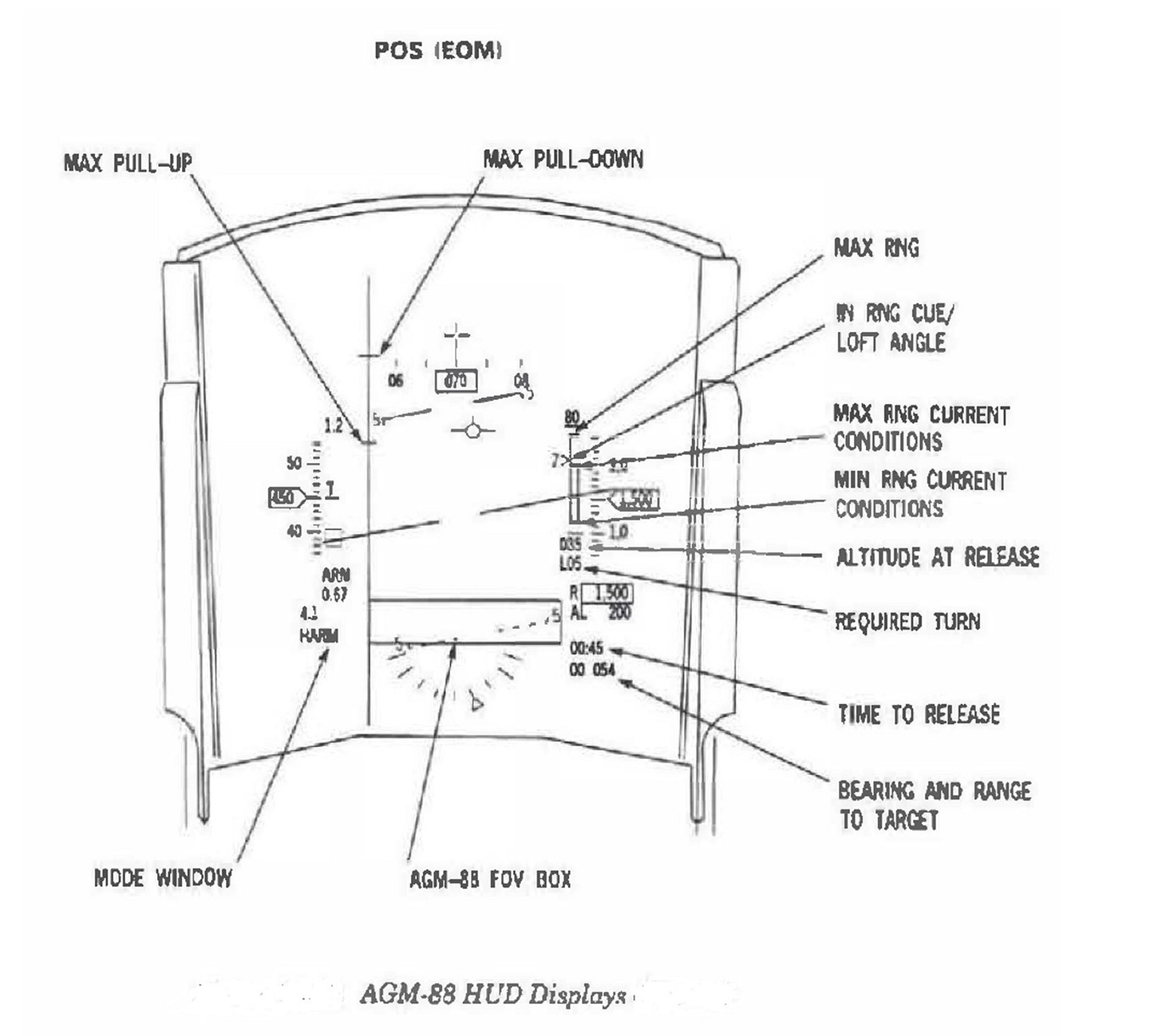
F-16 can properly use AGM-88. That is a serious threat for the Russian radars but it is not something that was not encountered before.
On the other hand, regarding the Russian AD, the F-16 is well known. With a relatively small physical size and the fact that the inlet hides the direct view of the first engine fan stage, F-16 has smaller RCS compared to other 4th generation fighters. It has similar RCS as the MiG-29, so nothing special, and Russian AD systems are well optimized to engage it. Older F-16 versions are even more vulnerable.
As previously mentioned, the F-16 has an impressive combat record with a high kill-to-loss ratio. HOWEVER, it is easy to have a good ratio against completely inferior opponents regarding the air defense and interceptor components. It is fairly easy to establish complete air superiority against an opponent that at its best can only field a few generations of older planes or missile systems. In Ukraine, that picture is very different. In Ukraine, the F-16 will be the inferior weapon, and that is going to change the overall picture. From the Air Defence perspective, there is simply nothing unknown about the F-16.
Let now talk about the AD vs. F-16:
F-16 has an RCS similar to the MiG-29. It is to say very visible on any radar system, including the old SNR-125.
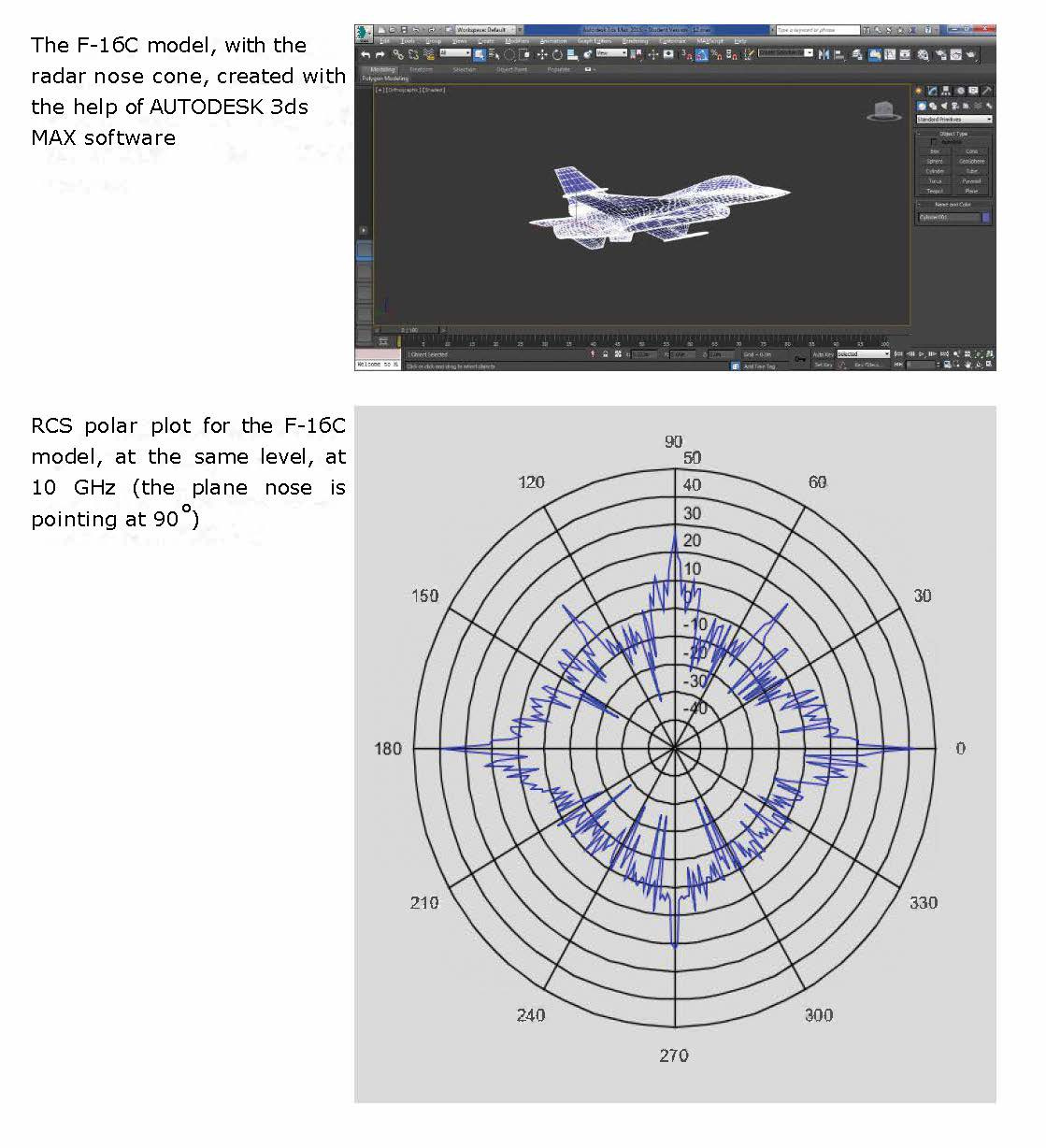
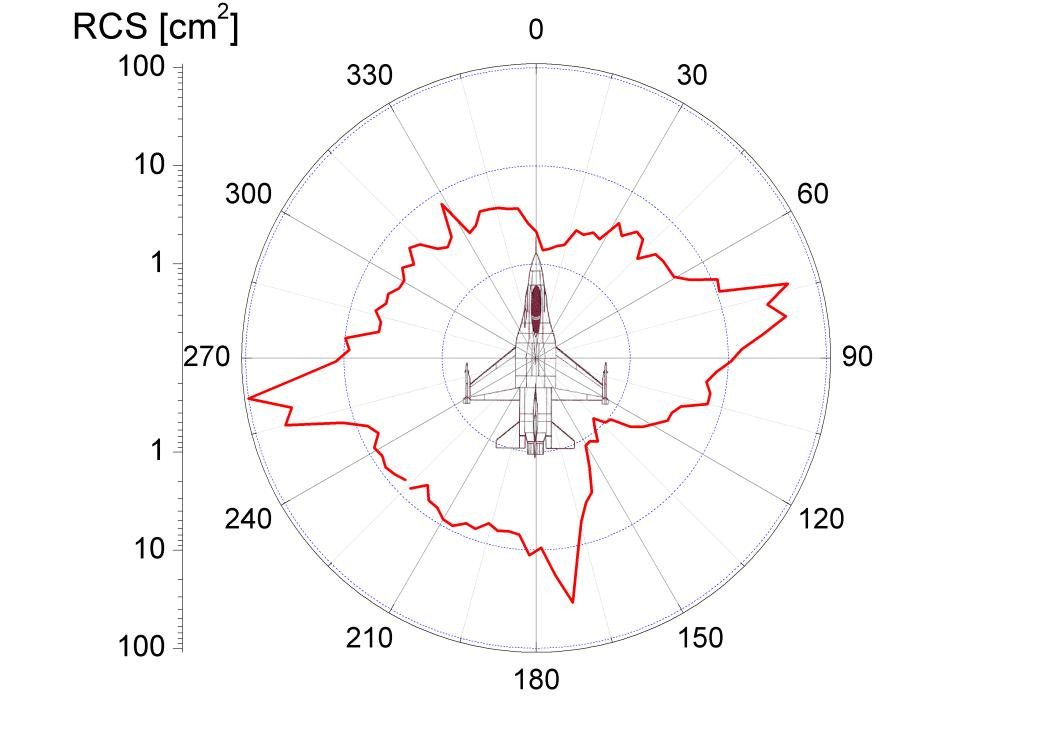
Regarding the F-16 RCS and simulation, I would recommend checking out the following link:
https://basicsaboutaerodynamicsandavionics.wordpress.com/2022/08/17/f-16a-radar-scattering-simulation/
Some of their work is shown here:

These guys did a very decent job simulating F-16A (without weapons). As they mentioned, “the biggest contribution to RCS on the F-16 is the radar array as it is essentially a flat plate perpendicular to the adversary radar. At 8.15 GHz both the median RCS value (0.9 m2) and average RCS value (1.79 m2) of the F-16 seem to be very close to the 1.2 m2 number often cited in the public sector. However, it can be seen from the contour map that the RCS fluctuated greatly, F-16 RCS when viewed from some angle can reach as low as -3.33 dBsm (0.46 m2), on the other hand, RCS can also spike as high as 10 dBsm (10 m2) when viewed from directly frontal”…
For the modern Russian AD systems, the F-16 is a well-defined, characterized, and studied target so in the case of a duel, in the author's humble opinion, the F-16 stands no chance, simply put.

Under the current circumstances, it is unlikely that Ukrainian F-16s will operate in a larger number than a pair (for the mutual support). As such, flying at the low level they can attempt to make ground attacks or SEAD missions, but from the moment they take off they will be tracked and engaged. If they survive this, the next challenge are the long & medium range AD systems, as well as the SHORADS and MANPADS at the front line. The preceding discussion of threats to the F-16 does not include the limited number of bases in Ukraine from which they can operate. There are just a handful of bases, and they must be equipped with weaponry, tools, and equipment to sustain the aircraft. Russia is going to hit those bases hard, even before the first Falcons land there. Based on this, it is highly likely that the much-prized Western planes will accomplish nothing more than pure PR stunts and attempts to boost morale. The outcome of the war can’t be changed with just a handful of birds.
The outcome is inevitable…
After the F-16s
Let's now look at what may happen after the F-16 story is over.
There are more Western airplanes that Ukraine certainly will ask for (or have already asked for). Those are F-18s (just to mention that there are some used numbers “available” in Canada and Finland), British Tornados, and Swedish JAS-39 Gripens. These planes are not as popular as F-16s, but definitely are on Kiev’s requirement list. However, this is the time when reality shall kick in: Yes, Canada and Finland can supply F-18s, BUT everything said about the F-16 is much more complicated when the F-18s are put into the equation. Gripens just may be the good solution after the F-16 euphoria is over but until that time a big unknown is what will be left of Ukraine.
In any case, wishes and demands for the new weapons are ongoing for the time being…
References and recommended reading:
AIR International , F-16 Special, 2015
Frederik Mertens - First Tanks, fighters next? (The Hague Centre for Strategic Studies, 2023)
Danny Coremans - Uncovering The Lockheed Martin F-16 A,B,C,D
Ra’anan Weiss, Alon Koren - Lockheed Martin F-16CD Barak-IsraDecal Publications (2006)
Operation Allied Force and the Role of Air Power
Peter Aleshire - Eye of the Viper The Making of an F-16 Pilot
Lt Colonel Dan Rooney - A Patriot's Calling_ My Life as an F-16 Fighter Pilot-Dey Street Books (2020)
Jake Melampy - The Modern Viper Guide - The F-16 CD Exposed
Larry Davis, James G. Robinson, Don Greer - Wild Weasel. The SAM Suppression Story
Hampton, Dan - Viper Pilot A Memoir of Air Combat
Witold Kowar, Przemyslaw Skulski - General Dynamics F-16 A/C Fighting Falcon (Pod Lupa No. 9)
Krzysztof Iwaszczuk, Henning Heiselberg, Peter Uhd Jepsen - Terahertz radar cross section measurements for a metal F-16 model.
Multi-Command Handbook F-16
https://basicsaboutaerodynamicsandavionics.wordpress.com/2022/08/17/f-16a-radar-scattering-simulation/
https://www.pen-and-sword.co.uk/Rockets-and-Missiles-Over-Ukraine-Hardback/p/24107
[i] Edited by Piquet (EditPiquet@gmail.com)
If you like the article (and much more articles regarding military subjects will come) you can buy me a coffee:
https://www.buymeacoffee.com/mmihajloviW

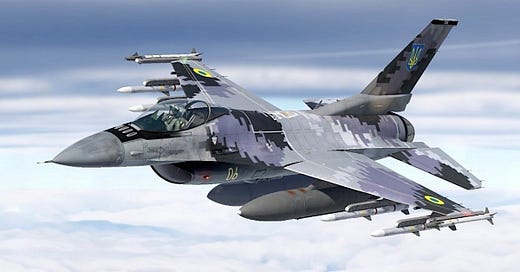







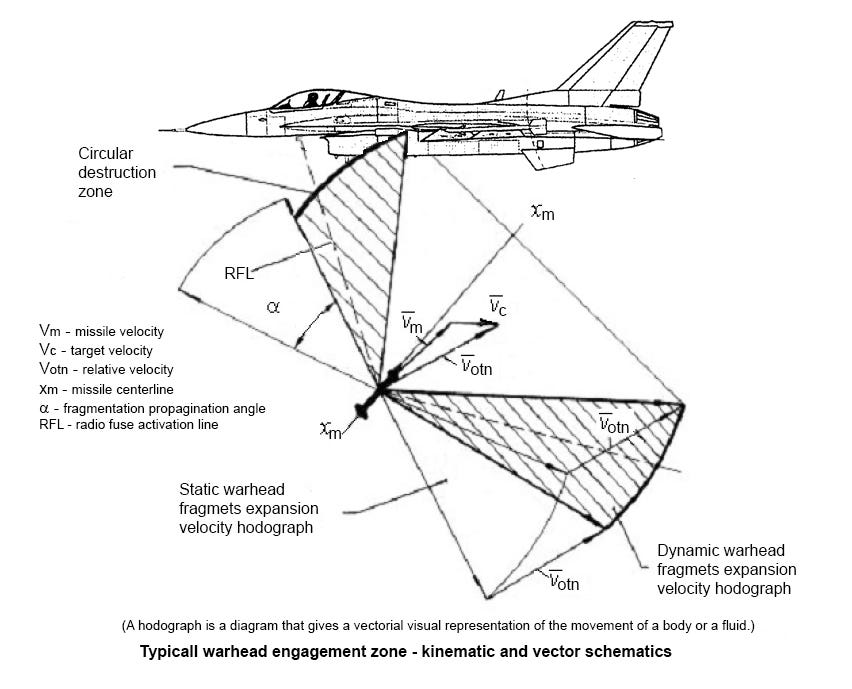

Nice overview. Thanks.
I don't think the training of existing fighter pilots is the bottleneck. There will be no dog fighting and only few weapons will be available. Just a missile truck. Existing pilots with experience in this war will be in terms of tactics and operation way ahead of their NATO trainers, anyway. Well, they may be kicked out, when they lack subservience and humbleness. C.W. Lemoine, a former F-16 pilot (a normal one, not a test pilots), argued in a recent video, the retraining towards F-16 for an experienced pilot may need 2-3 months. I don't buy into the claim, that UA pilots, at least those up to 35 yo, don't speak English. UA is NATO associated since years and EN is aviation language anyway. A bigger problem would exist if there aren't ready to retrain pilots left - then you have to begin from scratch (medical tests, prop, jet trainer). And it seems someone is hunting for pilots. 3 guys "crashing in MiG-29", that later morphed into L-39 (what the heck are two majors and one captain doing in L-39?), 6 "crashing in a Mi-8".
A bigger problem may exist with technicians, and here you need much more of them than few pilots, with serious experience and training. Years. Yea, these guy have to be imported. May be some gender quotas?
Thorough demonstration of Game Changer futility (again)!